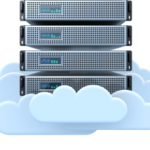Step-by-step guide to smoother data center relocation and cloud migration
Today, we will discuss how to prepare for data center relocations, consolidations, as well as cloud and application migrations. We’ll cover the challenges associated with these projects and their potential impact on application performance. While these initiatives offer significant benefits, such as cost reduction and streamlined processes, many companies hesitate to undertake them due to concerns about negative effects.
Moving servers during consolidation or relocation can result in various performance issues due to distance and latency. These issues include a significant increase in application response time, reduced productivity, decreased application scalability, and downtime or disruptions. In fact, up to 40 percent of applications fail to meet service level objectives during or after a data center relocation. This is why it’s crucial to test before undertaking a migration.
Let me provide you with a step-by-step guide to achieving a smoother data center relocation or migration using network emulation. A network emulator is a valuable tool because it can replicate the exact conditions you expect in your new network. You can simulate additional network impairments between clients and servers or between data centers, including latency, bandwidth constraints, packet loss, or even temporary link failures. Here are the four steps to help you reduce risk, costs, and frustration:
Identify Applications: Determine which applications will experience performance degradation. Simulate the new data center network environment using a WAN emulator to introduce impairments between users and application servers post-migration.
Investigate and Remediate: Use a network emulator to isolate specific conditions and bottlenecks impacting each application. This allows you to remediate performance problems and validate solutions in the lab. Examples of solutions could include code enhancements or WAN accelerators.
Assess Back-End Servers: Consider the impact on interdependent back-end servers. Additional latency may occur between servers during transitional stages of the move. Measure the impact of server-to-server latencies using network emulation and address them proactively.
Manage User Expectations: Allow users to experience post-move application performance in advance. Take steps to mitigate and address any issues. Throughout the process, use a WAN emulator to mimic expected conditions and test optimization strategies in real time.
Let’s walk through a specific example: During a data center relocation or consolidation, application servers are often moved to a new location. Suppose the current data center averages 30 milliseconds of latency. Migrating the application to a new location could add an additional 20 milliseconds of latency. However, it’s essential to recognize that equating network latency to application latency is a fallacy. The impact on application performance can be exponential due to factors such as chattiness (the number of messages exchanged between client and server), application location distribution, server scalability, and processing power. Replicating your production environment in the lab and using a WAN emulator to simulate expected conditions before and after the move is a best practice.
In the diagram below, the network emulator mimics the network conditions of the old data center and the new data center. This approach allows you to measure how changing network impairments will impact performance:
[Diagram: Old Data Center] ⟶ [Network Emulator] ⟶ [Diagram: New Data Center]
Network impairments significantly impact application and server performance. Addressing potential performance issues before the move is crucial. Now, let’s delve into a cloud migration example. In this scenario, applications are migrating from on-premises to the cloud. However, cloud environments often exhibit different network characteristics compared to on-premises networks. To address this, organizations can leverage a network emulator.
What Is a Network Emulator? A network emulator accurately replicates the network conditions of the target cloud environment. It emulates specific factors such as network latency, bandwidth, and packet loss. By doing so, it allows organizations to assess how their applications will perform in the cloud before the actual migration takes place.
Key Considerations for Cloud Migration:
Choose Your Cloud Provider and Regions:
- When planning a cloud migration, carefully consider which cloud provider (e.g., AWS, Azure, Google Cloud) you want to use and in which regions you want your application to run.
- Each cloud provider may have different pricing models, latency characteristics, and other impairments.
Avoid Common Pitfalls:
- A common mistake is setting up an application server in each cloud region and immediately starting testing. However, this approach is not necessarily cost-effective, especially when comparing multiple providers.
- Instead, consider using a network emulator to simulate the expected network conditions for each cloud region.
Network Emulation in Cloud Migration:
- In the diagram below, a network emulator mimics the network conditions of both a low-cost provider and a high-cost provider.
- By doing so, you can identify the most cost-effective option that still meets your performance requirements.
!Network Emulation Diagram
The Role of Network Emulators:
- A network emulator plays a critical role in each step of the relocation or cloud migration process:
- Accurate Simulation: It helps simulate network conditions realistically.
- Performance Bottlenecks: Identify and address performance bottlenecks.
- Solution Validation: Validate proposed solutions in a controlled lab environment.
- Assess Server Latency: Evaluate the impact of server-to-server latencies.
- User Expectations: Realistically evaluate post-move application performance.
Conclusion
In summary, using network emulators ensures that potential issues are identified early, solutions are effectively tested, and user expectations are managed. This ultimately increases the likelihood of a successful data center relocation or cloud migration.
For more detailed information on preparing for a smooth data center relocation or cloud migration, visit the links provided in the description.
